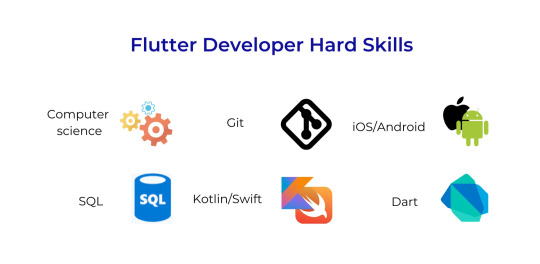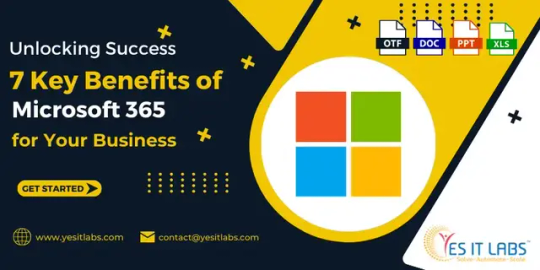#hire a developer
Explore tagged Tumblr posts
Text

Dreaming of an affordable and beautiful website for your business project? Look no further than Jyoti Kumari! I specialize in affordable website development, making your website dreams a reality. Let's build something amazing together!
#hire developer#wordpress developer#freelance developer#hire a developer#website development#ecommerce website#hire a freelance developer#web development#web design
2 notes
·
View notes
Text

Do you need a professional website design company to elevate your online presence? Look no further than Boffin Coders. Our expert team specializes in crafting stunning websites tailored to your unique needs. Call us today for a free consultation and take the first step towards a standout online presence!
#website development#website services#web development services#web development#web design#web developers#hire a developer
2 notes
·
View notes
Text
Wondering how much it costs to hire a developer in the USA? Whether you're building a mobile app, website, or custom software, developer rates can vary significantly based on experience, skill set, and project complexity. On average, hiring a software developer in the USA can cost anywhere from $50 to $150 per hour, depending on whether you choose a freelance developer, an in-house team, or a dedicated software development company.
This guide explores the true cost of hiring a developer in the USA, breaking down hourly rates by developer type (frontend, backend, full-stack, mobile, etc.), and comparing freelancers vs agencies vs full-time hires. We also cover how project scope, tech stack (like Python, React, Node.js), and location (Silicon Valley vs Midwest) impact pricing.
If you're searching for the best way to hire developers in the USA without overpaying, this article gives you clear insights and pricing benchmarks to help you make smart hiring decisions.
#shopify#app development company#usa#software company#app development#india#hire a developer#Hire best shopify developer
0 notes
Text

Build and grow your Shopify store with expert development services, ensuring a seamless shopping experience and increased conversions.
#shopify website development#hire a developer#custom e-commerce website development#custom shopify store design
0 notes
Text

https://hiredeveloper.dev/
Hire Top USA Developers | Expert Talent Pool | HireDeveloper Find and hire skilled developers in the USA. Access a vetted pool of top-tier talent for your projects. Fast, reliable, and cost-effective. Start building your dream team today!
#hire a dev team#hire a developer#freelance web developer#freelance software developer#app developers for hire#freelance app developers#hire software developer#hire web developer#freelance developer#laravel developer#hire a coder#hire a programmer#hire android developer#hire android expert
1 note
·
View note
Text
Explore why hiring a developer is crucial for web and mobile app projects and discover the benefits of hiring developers in India. Shilsha Technologies offers a wide range of skilled developers, including front-end, back-end, full-stack, and mobile app developers, all at affordable prices with flexible solutions.
0 notes
Text
Cost-Effective Alternatives to Full-Time Hires: Freelancers, Contractors, and Staff Augmentation

Hey there, fellow business owners and HR professionals! Are you feeling the pinch when it comes to hiring full-time employees? Trust me, you're not alone. In today's fast-paced business world, finding the right balance between talent and budget can feel like trying to solve a Rubik's cube blindfolded. But what if I told you there's a way to get the skills you need without breaking the bank? Stick with me, and I'll show you how freelancers, contractors, and staff augmentation could be the game-changers you've been looking for.
The Hiring Dilemma: Why Traditional Approaches Might Not Cut It
Let's face it: hiring full-time employees is expensive. Between salaries, benefits, office space, and equipment, the costs can add up faster than a kid in a candy store with a blank check. And that's not even considering the time and resources spent on recruitment and training.
But here's the kicker: in many cases, you might not even need a full-time employee for every role. Maybe you have a big project coming up that requires specialized skills for a few months. Or perhaps your workload fluctuates throughout the year. This is where our cost-effective alternatives come into play. You can go for best php developer with scalable requirement and specialized skills.
Freelancers: The Solo Artists of the Business World
First up, we have freelancers. Think of them as the solo artists of the business world. They're independent professionals who specialize in specific skills or industries. Need a graphic designer for your new marketing campaign? A freelancer can help. Looking for a writer to spruce up your website content? Yep, freelancers have got you covered.
The beauty of working with freelancers is their flexibility. You can hire them for short-term projects or ongoing work, and you only pay for the hours they actually work. No need to worry about providing benefits or office space. Plus, with platforms like Upwork and Fiverr, finding skilled freelancers is easier than ever.
But here's a pro tip: when working with freelancers, clear communication is key. Make sure you're both on the same page about expectations, deadlines, and payment terms. It's like any good relationship – honesty and openness go a long way.
Contractors: The Specialists on Speed Dial
Next up, we have contractors. Think of contractors as the specialists you keep on speed dial. They're similar to freelancers but often work on longer-term projects and may be more integrated into your team.
Contractors are perfect when you need someone with specialized skills for an extended period but don't want to commit to a full-time hire. Maybe you're launching a new product and need a project manager for six months. Or perhaps you need extra IT support during a system upgrade. Contractors can step in, do the job, and step out when the project's done.
The best part? Contractors often come with a wealth of experience from working with different companies. They can bring fresh perspectives and innovative ideas to your team. It's like having a consultant and an extra pair of hands all rolled into one!
Staff Augmentation: Your Flexible Workforce Solution
Now, let's talk about staff augmentation. If freelancers are solo artists and contractors are specialists on speed dial, think of staff augmentation as your backup band that can grow or shrink as needed.
Staff augmentation involves partnering with a third-party provider who can supply you with skilled professionals to supplement your existing team. It's like having an extended talent pool at your fingertips. Need to scale up quickly for a big project? Staff augmentation can help. Want to bring in specialized skills without the long-term commitment? You guessed it – staff augmentation is the answer. Yes, choosing updated and skilled Laravel developer is all you need instead of hiring expensive inexperienced team and methods.
The beauty of this approach is its flexibility. You can quickly adjust your workforce based on your current needs and budget. It's like having a dimmer switch for your team size – you can dial it up or down as needed.
Making the Most of These Alternatives
Now, I know what you might be thinking: "This all sounds great, but how do I actually implement these alternatives?" Well, I'm glad you asked! Here are some tips to help you make the most of freelancers, contractors, and staff augmentation:
1. Identify Your Needs: Before diving in, take a step back and assess your needs. What skills are you missing? How long do you need them for? This will help you decide which alternative is best for you.
2. Start Small: If you're new to these approaches, start with a small project. It's like dipping your toe in the water before diving in. This will help you get comfortable with the process and iron out any kinks.
3. Build Relationships: Whether you're working with freelancers, contractors, or a staff augmentation provider, building strong relationships is key. Treat them as valued partners, not just temporary help.
4. Embrace Technology: Tools like project management software and video conferencing can help you collaborate effectively with remote workers. It's like having a virtual office that's open 24/7.
5. Be Clear About Expectations: Clear communication is crucial. Make sure everyone understands their roles, responsibilities, and deadlines. It's like giving everyone the same sheet music – it ensures you're all playing the same tune.
The Bottom Line: Flexibility is the Future
In today's rapidly changing business landscape, flexibility is more than just a buzzword – it's a necessity. By embracing alternatives like freelancers, contractors, and staff augmentation, you're not just saving money. You're setting your business up to be agile, responsive, and ready for whatever challenges come your way.
Remember, there's no one-size-fits-all solution. The best approach for your business might be a combination of these alternatives. Maybe you use freelancers for creative projects, contractors for specialized technical work, and staff augmentation to handle seasonal spikes in demand. It's like creating your own custom workforce cocktail – mix and match until you find the perfect blend for your business.
So, are you ready to shake things up and explore these cost-effective alternatives? Trust me, your budget (and your stress levels) will thank you. Who knows? You might just find that these flexible approaches are the secret ingredient your business has been missing all along.
Remember, in the world of business, it's not about having the biggest team – it's about having the right team. And with these alternatives in your toolkit, you're well on your way to building a dream team that's as flexible as it is effective. Here's to smart hiring and even smarter business growth!
0 notes
Text
Navigating the Full Stack Testing Pyramid: A Beginner's Guide

In the world of software development, ensuring the quality and reliability of your applications is paramount. One of the most effective ways to achieve this is through comprehensive testing. However, with the complexity of modern full-stack applications, knowing where to start and how to structure your testing efforts can be challenging. This is where the concept of the Full Stack Testing Pyramid comes into play.
Understanding the Full Stack Testing Pyramid
The Full Stack Testing Pyramid is a visual metaphor that helps developers and quality assurance professionals understand and implement a balanced testing strategy. It provides a framework for organizing different types of tests based on their scope, speed, and cost.
At its core, the testing pyramid consists of three main layers:
1. Unit Tests (Base)
2. Integration Tests (Middle)
3. End-to-End (E2E) Tests (Top)
Let's dive into each layer and explore its significance in the testing process.
Unit Tests: Building a Solid Foundation
At the base of the pyramid, we find unit tests. These are the most granular and focused tests in your testing suite. Unit tests target individual components or functions of your code in isolation.
Key Characteristics of Unit Tests:
- Fast execution
- Low cost to write and maintain
- High specificity
- Easily automated
Unit tests are crucial for catching bugs early in the development process. They help ensure that each piece of your code functions correctly on its own before it's integrated with other components in full stack development.
To implement effective unit tests, follow these best practices:
1. Keep tests small and focused
2. Use descriptive test names
3. Test both expected and edge cases
4. Aim for high code coverage
5. Run unit tests frequently, ideally on every code change
By building a strong foundation of unit tests, you create a safety net that catches low-level issues quickly and efficiently.
Integration Tests: Connecting the Dots
Moving up the pyramid, we encounter integration tests. These tests verify that different components or modules of your application work together correctly. Integration tests are essential for catching issues that arise when combining various parts of your system.
Key Characteristics of Integration Tests:
- Moderately fast execution
- Medium cost to write and maintain
- Test interactions between components
- Can involve external dependencies (e.g., databases, APIs)
Integration tests bridge the gap between unit tests and end-to-end tests. They help ensure that your application's different layers and services communicate effectively.
When implementing integration tests, consider the following tips:
1. Focus on critical integration points
2. Use test doubles (mocks, stubs) for external dependencies when appropriate
3. Test both happy paths and error scenarios
4. Pay attention to data consistency across integrated components
5. Run integration tests regularly, but less frequently than unit tests
By thoroughly testing component interactions, you can catch issues that may not be apparent at the unit test level.
End-to-End (E2E) Tests: The User's Perspective
At the top of the pyramid, we have end-to-end tests. These tests simulate real user scenarios and interactions with your application. E2E tests verify that all components of your system work together correctly from the user's perspective.
Key Characteristics of E2E Tests:
- Slower execution compared to other test types
- Higher cost to write and maintain
- Test the entire application stack
- Closest to real-world user experience
While E2E tests are valuable for ensuring overall system functionality, they come with some trade-offs. They are typically slower to run and more prone to flakiness due to their comprehensive nature.
To make the most of your E2E tests:
1. Focus on critical user journeys
2. Limit the number of E2E tests to keep execution times manageable
3. Use stable test environments that closely mimic production
4. Implement proper test data management
5. Run E2E tests less frequently, such as nightly or before major releases
E2E tests provide confidence that your application works as expected from a user's standpoint, but they should be used judiciously due to their higher cost and longer execution times.
Balancing the Pyramid: Finding the Right Mix
The key to successful full stack testing lies in finding the right balance between these three types of tests. The pyramid shape suggests that you should have:
- A large number of fast, focused unit tests
- A moderate number of integration tests
- A small number of comprehensive E2E tests
This balance helps optimize your testing efforts for both speed and coverage. However, the exact ratio may vary depending on your project's specific needs and constraints.
Implementing the Full Stack Testing Pyramid
Now that we understand the different layers of the testing pyramid, let's explore how to implement this approach in your development process.
1. Start with a Strong Unit Testing Foundation
Begin by focusing on writing comprehensive unit tests for your codebase. This includes:
- Testing individual functions and methods
- Verifying edge cases and error handling
- Aiming for high code coverage (typically 70-80% or higher)
Use testing frameworks appropriate for your tech stack, such as Jest for JavaScript, pytest for Python, or JUnit for Java.
2. Build Integration Tests for Critical Paths
Once you have a solid base of unit tests, start adding integration tests for key areas of your application. This might involve:
- Testing API endpoints
- Verifying database interactions
- Checking communication between microservices
Tools like Postman, Supertest, or language-specific integration testing libraries can be helpful here.
3. Implement E2E Tests for Core User Flows
Finally, add E2E tests to cover the most important user journeys in your application. This typically includes:
- User registration and login
- Core business processes
- Critical data workflows
Popular E2E testing tools include Cypress, Selenium, and Playwright.
4. Automate Your Test Suite
To get the most value from your testing pyramid, automate the execution of your tests. Implement Continuous Integration/Continuous Deployment (CI/CD) pipelines that run tests automatically on code changes or before deployments.
5. Monitor and Refine
Regularly review your test suite's performance and effectiveness. Look for opportunities to:
- Improve test coverage
- Reduce flaky tests
- Optimize test execution times
- Update tests as your application evolves
Overcoming Common Challenges
Implementing the Full Stack Testing Pyramid can come with its share of challenges. Here are some common issues and how to address them:
1. Overreliance on E2E Tests
It's tempting to focus heavily on E2E tests because they simulate real user behavior. However, this can lead to slow, brittle test suites. Instead, push as much testing as possible down the pyramid to faster, more focused tests.
2. Neglecting Integration Tests
Sometimes developers jump from unit tests straight to E2E tests, missing the crucial middle layer. Make sure to invest in integration tests to catch issues that arise from component interactions.
3. Maintaining Test Data
As your test suite grows, managing test data can become complex. Implement strategies for creating, managing, and cleaning up test data effectively across all layers of the pyramid.
4. Dealing with Flaky Tests
Flaky tests, especially in E2E testing, can erode confidence in your test suite. Identify and fix flaky tests promptly, and consider quarantining persistently flaky tests until they can be addressed.
Conclusion
The Full Stack Testing Pyramid provides a valuable framework for structuring your testing efforts in a way that balances speed, cost, and coverage. By implementing a mix of unit, integration, and E2E tests, you can catch bugs early, ensure component interactions work as expected, and verify that your application meets user needs.
Remember, the key to successful testing is finding the right balance for your specific project. Start with a strong foundation of unit tests, build up your integration test suite, and use E2E tests judiciously to cover critical user flows.
As you navigate the Full Stack Testing Pyramid, keep learning, iterating, and refining your approach. With practice and persistence, you'll develop a robust testing strategy that helps you deliver high-quality software with confidence.
0 notes
Text
How to Hire a Flutter Developer - A Complete Guide In 2024
In today's rapidly evolving digital landscape, mobile applications have become essential tools for businesses to engage with their audience. Flutter, Google's UI toolkit for building natively compiled applications for mobile, web, and desktop from a single codebase, has gained immense popularity for its versatility and efficiency. However, hiring the right Flutter developer for your project can be a daunting task.
In this comprehensive guide, we'll explore everything you need to know about hiring Flutter developers, from understanding the cost to step-by-step hiring process and assessing the demand for Flutter app developers.
Table of Content
How Much Does it Cost to Hire a Flutter Developer?
Step-by-Step Guide to Hire Flutter Developers
Define your goals and requirements
Set a deadline and budget
Establish your relevant criteria
Choose a reliable development partner
Sign a contract and an NDA
Decide on a project management strategy
Is There a Demand for Flutter App Developers?
5 Essential Skills Flutter Developer Must Have
Conclusion
FAQs
How Much Does it Cost to Hire a Flutter Developer?
The cost of employing a Flutter developer might differ greatly based on a number of variables, including project complexity, expertise level, and location. The typical hourly compensation for Flutter developers is between $20 and $150. Still, it's important to think about the value that developers are offering instead of just the price.

Step-by-Step Guide to Hire Flutter Developers
Define your goals and requirements: Establish the objectives, parameters, and scope of your project precisely before beginning the hiring process. Assess your needs and decide if you require a specialist in a certain area or a full-stack Flutter developer.
Set a deadline and budget: Give your project reasonable finances and timelines. When you're determining your budget, take into account things like development time, extra features, and possible changes.
Establish your relevant criteria: Make a list of the standards by which you will judge Flutter developers. Technical proficiency, experience level, portfolio, communication prowess, and cultural fit are a few examples of this.
Choose a reliable development partner: Look into and narrow down possible development partners according to your requirements.
Sign a contract and an NDA: It's critical to execute a contract specifying the project scope, deliverables, schedule, payment terms, and any confidentiality agreements as soon as you've decided on a development partner.
Decide on a project management strategy: To guarantee seamless cooperation between you and the development team, set up clear channels of communication and project management software. The project must be updated frequently, and feedback sessions are crucial to its success.
Is There a Demand for Flutter App Developers?
The need for Flutter app developers is growing as a result of major corporations like Google, Alibaba, and BMW embracing Flutter more and more. Companies are becoming more and more in need of developers who can effectively utilize Flutter's features to create cross-platform applications.
5 Essential Skills Flutter Developer Must Have

Proficiency in Dart Programming Language:
The programming language used to create Flutter applications is called Dart. Writing effective and maintainable code requires a firm grasp of Dart syntax, features, and best practices. Classes, inheritance, asynchronous programming, and error handling in Dart should all be familiar to developers.
UI/UX Design Skills:
Flutter offers a vast array of customisable components and widgets that enable developers to design stunning and responsive user interfaces (UIs). A proficient grasp of UI/UX principles, an eye for design, and the capacity to convert design mockups into interactive and aesthetically pleasing user interfaces are essential qualities for a Flutter developer. Being proficient with programmes such as Adobe XD, Sketch, or Figma can also be helpful when working with designers.
Experience with State Management Solutions:
Creating intricate Flutter applications requires careful consideration of application state management. The different state management options included in Flutter, including Provider, Bloc, Redux, Riverpod, and MobX, should be known to developers. Writing scalable and maintainable code requires an understanding of the advantages and disadvantages of each strategy as well as knowing when to apply it.
Knowledge of Platform-specific Integrations:
Although Flutter offers a uniform framework for creating cross-platform apps, for improved functionality, developers might also need to incorporate platform-specific features and APIs. Accessing device-specific capabilities such as camera, geolocation, sensors, and permissions requires a solid understanding of platform channels, plugins, and packages, which are all available to Flutter developers.
Testing and Debugging Skills:
To guarantee the stability and dependability of Flutter apps, testing is a crucial step in the development process. Developers should know how to use tools like Mockito, Flutter Driver, and the built-in test framework in Flutter to write unit, widget, and integration tests. Furthermore, proficient debugging abilities are necessary to locate and fix problems quickly throughout development.
Conclusion
Hiring the right Flutter developers is essential for the success of your app development project. By following the steps outlined in this guide and carefully evaluating your options, you can find talented developers who can bring your vision to life and create a seamless, high-quality app that delights users and drives results. With the demand for Flutter app developers on the rise, now is the perfect time to invest in building your dream app with Flutter.
While considering your options, it's also worth noting the ongoing debate between React and Flutter for cross-platform development. React Native has been a popular choice for many developers, offering a familiar JavaScript ecosystem and a large community of developers.
However, Flutter's advantages, such as its single codebase for multiple platforms, hot reload feature, and consistent UI across platforms, make it a compelling alternative. Ultimately, the choice between React vs Flutter will depend on your project requirements, team preferences, and long-term goals.
FAQs
What skills should I look for when hiring a Flutter developer?
Look for proficiency in Dart programming, experience with Flutter SDK, and a strong understanding of UI/UX principles.
What are the key factors to consider when evaluating a Flutter developer's portfolio?
Assess their previous Flutter projects, review their code quality, and examine user interface design and responsiveness.
How can I ensure effective communication and collaboration with a remote Flutter developer?
Utilize communication tools like Slack or Zoom, establish clear project goals and expectations, and schedule regular progress updates and check-ins.
0 notes
Text
If you're looking for Magento developers, there are several avenues you can explore: This blog provides you information about Hire Magento Developers. Magento 2 is great for businesses big and small because it Magento 2 has many abilities to offer.
Freelance Platforms: Websites like Upwork, Freelancer, and Toptal allow you to post your job requirements and hire freelancers directly. You can review profiles, portfolios, and ratings to find the best fit for your project.
Magento Partners: Magento has a network of certified solution partners who specialize in Magento development. These agencies often have teams of experienced developers who can handle projects of varying sizes.
Job Boards: Posting your job on specialized job boards such as Magento Jobs, Indeed, or LinkedIn can help you reach a broader audience of developers actively seeking work.
By hiring Magento 2 developers trusted by brands, businesses can be sure their websites will work well without any problems. These builders are skilled and smart enough to make, fix up, and keep running the website all the time. They can also give tips and support on how to use the Magento 2 system best, including helping businesses keep secure with safety, fast performance, and fine-tuning.

#Hire magento developers free#hire magento 2 developer#hire magento developer india#hire magento expert developer#hire a developer
0 notes
Text

Don't worry about high costs. Jyoti Kumari offers affordable website development that fits your budget, so you can get a professional site without spending a fortune.
#website development#hire developer#ecommerce website#freelance developer#website services#wordpress developer#hire a developer#affordable website development
1 note
·
View note
Text

Boffin Coders offers web development services encompassing front-end and back-end development, E-commerce Solutions and more.
#website development#app development#hire a developer#web development#web development services#web development agency#web developers
2 notes
·
View notes
Text
Unlocking Success: A Guide on How to Hire a Developer for Your Project
Embarking on a new project is both exciting and challenging, and finding the right developer can significantly impact its success. Whether you’re launching a website, developing a mobile app, or working on a software solution, the process of hiring a developer is a critical step. In this guide, we’ll walk you through the key considerations and steps to ensure you make the right choice when…

View On WordPress
#app development#Budgeting for Developers#Client Reviews#Coding Expertise#Collaborative Development#Developer Hiring Tips#Developer Interviews#Developer Selection#freelance developers#Hire a Developer#Hiring Process#Project Collaboration#Project Development#Project Management#Project Milestones#Project Scope#software development#Tech Skills#Technical Requirements#Web development
1 note
·
View note
Text

Scale your business multi fold with VelanApps Dedicated Development Team. We provide support for expert on-boarding and team-building processes, while also offering cost optimization solutions for businesses.
#hire a developer#hire mobile app developer#hire php developers#hire javascript developers#hire laravel developer#hire magento developer#hire wordpress developers#hire full stack developers
0 notes
Text

7 Key Benefits of Microsoft 365 for Your Business
Unleash the capabilities of Microsoft 365: Elevate productivity, foster better collaboration, and fortify your business. Dive in today!
#Benefits of Microsoft 365#hire a developer#Microsoft 365 development Company#Microsoft 365 offers#benefits of Microsoft 365
0 notes